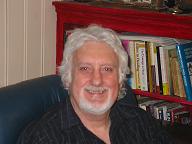Therapeutic Process
|
Michael Hoyland-Young M.A. Clinical Member OSP In Office Phone Sessions
Skype Sessions
|
The process of therapy must adjust itself to the needs of the client, and not the other way around. So, each client’s presenting issues are unique and so must be their therapy. After 24 years of practice, I have developed an eclectic approach to therapy and add to that, my intuition and an open heart. One thing I have discovered as a therapist is the power of the client/therapist relationship to create positive change. When safety, trust and strong boundaries have been achieved between a client and a therapist their connection models a healthy and balanced relationship that, by its very nature, is healing and can be transformative. From here, a Cognitive approach, in consultation with the client, can work towards an accurate and clear ‘insight’ into identifying a client’s presenting issues, and, from that rational/analytical assessment, a strategy will emerge to direct the therapy. Cognitive Therapy, or Talk Therapy, is a vital component of successful therapy. If we were unable to achieve insight, which is singularly about ‘seeing something for what it is’, we wouldn’t be able to determine truth, acknowledge core belief systems, understand reoccurring behavioral patterns, or assess trauma and dysfunction effectively. Truly, the next step in the therapeutic process would be hard to take. For some clients, the insight and structure provided by Cognitive Therapy is satisfying enough to complete their therapeutic journey. It is my experience however, that most clients who seek meaningful and lasting change through a depth psychotherapeutic experience are most successful when they are willing to move the insights they have learned from the analytical chair and manifest them in an Experiential and Expressive mode of therapy. It’s in this Experiential and Expressive dynamic of therapy that their inner process becomes ‘real to them’ and a deep healing and integration can take place. It is with a client’s consent and willingness, with the creation of a safe therapeutic container and a respect for their pace and timing within the therapy, that together we become like alchemists intent on transforming trauma, pain, dysfunction and suffering into a courageous adventure of healing, authentic expression in sound and movement, of reconciliation and eventual integration. I’d like to offer a brief description of the Expressive and Experiential modes of therapy that I offer but will refer to their ‘action’ within the therapy rather than a depth presentation of their theory base. Please email or phone me if you would like more information on any of these modalities. Primal Integration Therapy is a singular focus on the emotional expression of our deepest wounding and trauma that we have experienced in our lives. It especially seeks to have a person experience, then integrate, how past wounding effects present day feeling states, behaviors and belief systems. Primal Integration Therapy can bring great relief and healing through deep emotional release and integration of what was ‘there and then’ to what is ‘here and now’. Expressive Arts Therapy is a powerful and wonderful method of implementing the art of psychotherapy. It quite simply is the therapeutic use of any art modality. The Arts seem to be a force or medium that spirals up through a trust and openness into one’s creative spontaneity in the service of authentically connecting us back to ourselves. Artistic expression can create a non-verbal language that opens us to our core and releases our truth in a painting, a dance, a poem, a story, or a song. The use of the Expressive Arts in Psychotherapy is dear to me. Unlike the raw emotional expression in Primal Integration Therapy, or the rationally based insight of Cognitive approaches, the arts resonate with the core of who we are as human beings. Through an art expression we can assess our wound, our authenticity, our genuineness, and our soul and bring harmony to the four dynamics that constitute our nature: mind, body, emotion and spirit. Gestalt Therapy is rich in its ability to communicate and then integrate. It assists a client in linking their rational dialogue, around any therapeutic issue, with their emotional expression. It helps integrate split-off parts of one’s self back into a unified whole. Gestalt Therapy helps a client identify their issues, single them out, and give voice from that particular place. Psychodrama is a therapeutic modality enacted within a group format. Any scene from a person’s past can be brought to life with sometimes startling insights, liberating dialogue, and creating the potential for healing, resolution and integration. Jungian Sandplay is a three dimensional art expression created in sand. Using miniature symbols representing any and all aspects of life a client is encouraged to choose symbols relevant to their therapeutic process and arrange them in a sandbox in some form of relationship to each other. They are asked to choose their symbols more from a ‘felt sense’ of what is right to them rather than ‘thinking’ about what is right. Working from this place develops a trusting resonance with the unconscious part of our psyche and can allow for a deep connection to our therapeutic process. Jungian Sandplay can be a wonderful way to express, reveal, discover, and understand ourselves.
|
